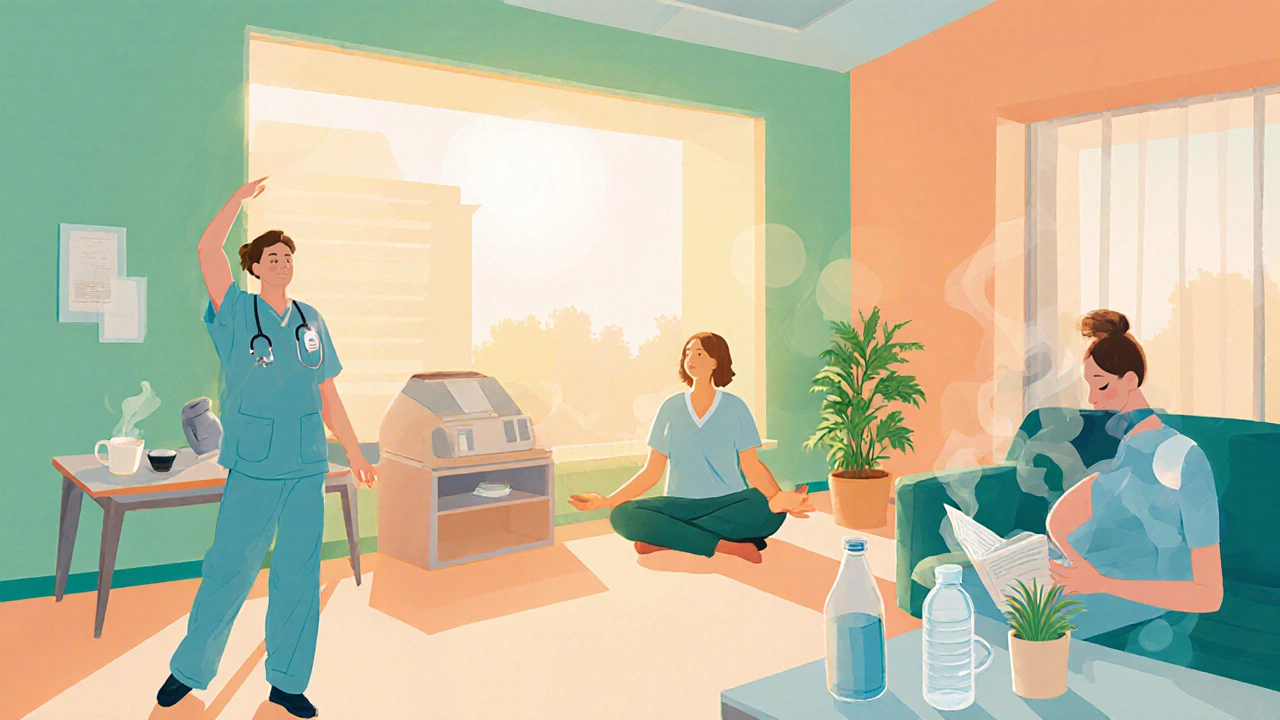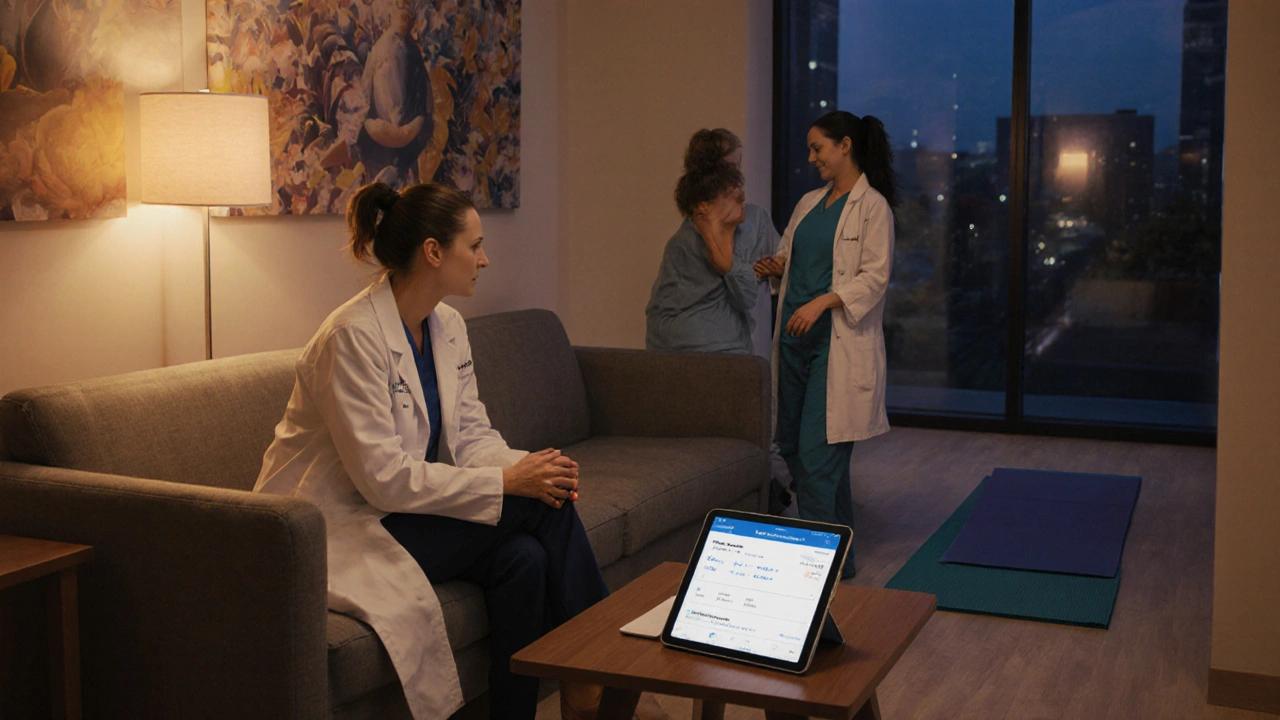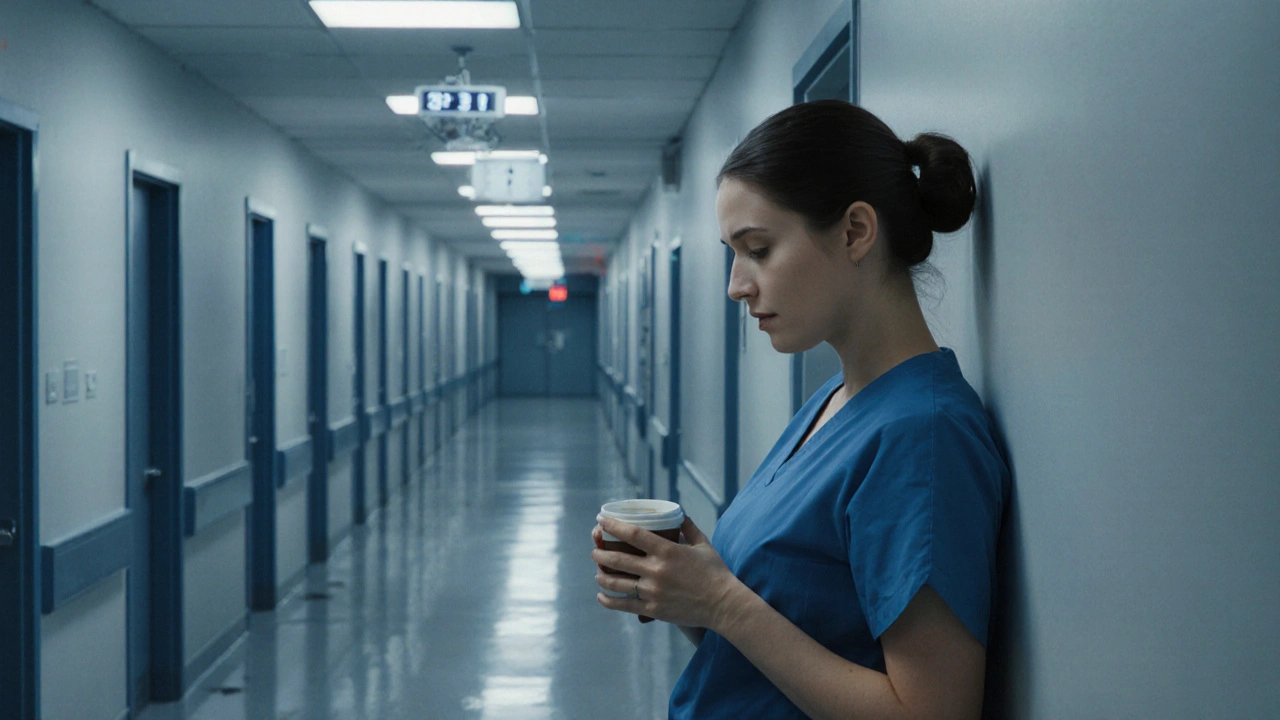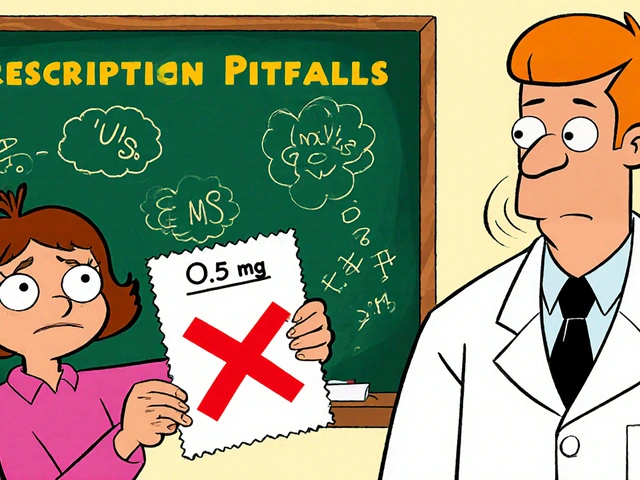When a nurse pulls an early‑morning shift, a doctor finishes a night round, and a lab tech starts a 12‑hour rotation, the body’s clock gets tossed around like a loose‑leaf schedule. Shift‑Work Disorder is a sleep‑wake condition that arises when work hours clash with the natural circadian rhythm, leading to chronic fatigue, insomnia, and mood swings. In hospitals, where every hour can mean life or death, the ripple effects are anything but minor.
Key Takeaways
- Shift‑Work Disorder (SWD) affects up to 20% of rotating‑shift staff in the NHS.
- Symptoms include insomnia, excessive sleepiness, irritability, and reduced cognitive performance.
- SWD raises the risk of medical errors, staff burnout, and long‑term cardiovascular issues.
- Individual tactics (light therapy, strategic napping) and workplace policies (fatigue‑management programs) work best together.
- Early professional help can prevent progression to severe depression or anxiety.
What Exactly Is Shift‑Work Disorder?
Defined by the American Academy of Sleep Medicine, SWD occurs when a person’s work schedule forces them to sleep at times that run counter to their internal clock. The result isn’t just feeling a bit tired-it’s a persistent inability to obtain restorative sleep, often lasting for months. In the UK, the Health and Safety Executive estimates that roughly 1 in 5 NHS staff on rotating shifts meet the clinical criteria for SWD.
Typical symptoms include:
- Difficulty falling asleep during the day.
- Frequent nocturnal awakenings.
- Excessive sleepiness during work hours.
- Headaches, gastrointestinal upset, and mood volatility.
Because the condition is chronic, it can masquerade as depression or anxiety, making diagnosis tricky without a focused sleep history.
Why Healthcare Workers Are Especially Vulnerable
Healthcare workers are a diverse group-nurses, doctors, pharmacists, radiographers-who share three core stressors: irregular hours, high‑stakes decision‑making, and limited downtime.
When SWD hits, the impact spreads beyond the individual:
- Patient safety drops. Studies from the Royal College of Physicians show a 23% increase in medication errors on night shifts plagued by fatigue.
- Team communication falters; misinterpreted handovers become common.
- Long‑term burnout rates climb, fueling staff shortages and turnover.
In short, one tired clinician can ripple into a whole ward’s performance.
The Science Behind the Fatigue
The body runs on a circadian rhythm, a roughly 24‑hour cycle regulated by light, temperature, and hormone release. Melatonin, the sleep hormone, spikes when darkness falls and drops with morning light. When a night‑shift worker sleeps during the day, bright sunlight suppresses melatonin, shortening deep sleep stages.
Concurrently, sleep deprivation accumulates. After 24 hours awake, reaction time slows by about 30%, comparable to a blood‑alcohol level of 0.08%-the legal driving limit in the UK. For staff performing invasive procedures, that slowdown can be disastrous.

Individual Strategies to Tame the Disorder
Self‑help isn’t a cure‑all, but a solid toolbox can mitigate symptoms.
- Control Light Exposure: Wear amber‑tinted glasses on the way home from a night shift to block blue light, then expose yourself to bright white light (or a light‑box) during the first half of the night shift to reset the clock.
- Strategic Napping: A 20‑minute power nap before a long shift can boost alertness without causing grogginess.
- Consistent Sleep Window: Even on days off, aim for a 7‑hour sleep block within the same 24‑hour window to help the body lock onto a rhythm.
- Caffeine Timing: Use caffeine early in the shift, but avoid it after the midway point to prevent interference with post‑shift sleep.
- Nutrition & Hydration: Light, protein‑rich meals keep energy stable; heavy carbs trigger drowsiness.
When these habits feel overwhelming, a brief consult with an occupational health nurse can personalize a plan.
Workplace Interventions That Actually Work
Individual effort meets its limit if the system keeps forcing night‑after‑night rotations. Forward‑thinking hospitals embed fatigue‑management programs into their policies.
| Aspect | Shift‑Work Disorder | General Fatigue | Burnout |
|---|---|---|---|
| Root Cause | Misaligned work‑sleep schedule | Acute workload spikes | Chronic emotional exhaustion |
| Key Symptoms | Insomnia, daytime sleepiness | Tiredness after exertion | Cynicism, reduced efficacy |
| Risk to Patients | High (impaired cognition) | Moderate | High (attitude impacts care) |
| Typical Intervention | Schedule redesign, light therapy | Rest breaks, workload balance | Counselling, workload reduction |
Key organisational steps include:
- Limit consecutive night shifts to a maximum of three.
- Provide designated quiet rooms for short naps.
- Rotate shifts forward (day→evening→night) rather than backward.
- Use electronic rostering tools that flag high‑fatigue risk patterns.
- Offer regular training on sleep hygiene and stress management.
When a hospital formally adopts a fatigue‑management framework, error rates in the emergency department tend to drop by 15% within six months, according to a 2024 NHS audit.
When to Seek Professional Help
If symptoms persist despite lifestyle tweaks, it’s time to talk to a specialist. Occupational health services can run a sleep study, prescribe melatonin, or arrange therapy for underlying anxiety. Early referral reduces the chance of developing severe depression, which, as the British Medical Association notes, affects 12% of chronic SWD sufferers.
Employee assistance programmes (EAPs) often include confidential counselling and can guide staff toward local sleep clinics.
Building a Culture That Prioritises Rest
Beyond policies, a shift in mindset is crucial. Leaders who openly discuss fatigue, celebrate staff who take their rest days, and model healthy sleep habits create an environment where nurses and doctors feel safe admitting they’re exhausted. Such cultural shifts improve morale, lower turnover, and ultimately safeguard patient outcomes.

Frequently Asked Questions
How is Shift‑Work Disorder diagnosed?
A clinician will review a detailed sleep log, assess symptom duration (at least three months), and rule out other sleep disorders such as sleep apnea. Objective tests like actigraphy may be used for confirmation.
Can melatonin pills cure Shift‑Work Disorder?
Melatonin can help reset the circadian clock when taken 30‑60 minutes before the desired sleep time, but it isn’t a stand‑alone cure. It works best combined with light‑exposure strategies and consistent scheduling.
What is the legal duty of an NHS Trust regarding staff fatigue?
Under the Health and Safety at Work Act, employers must assess and mitigate risks, including fatigue. Failure to do so can lead to enforcement action by the HSE.
Are short naps on night shifts allowed?
Yes. A 15‑20 minute “power nap” can restore alertness without entering deep sleep, which would cause grogginess upon waking. Many hospitals now provide dedicated nap pods for this purpose.
How does Shift‑Work Disorder differ from simple tiredness?
Simple tiredness resolves after a good night’s sleep. SWD is chronic, with insomnia that persists even when the person tries to sleep, and it often co‑exists with mood changes and impaired cognition.




